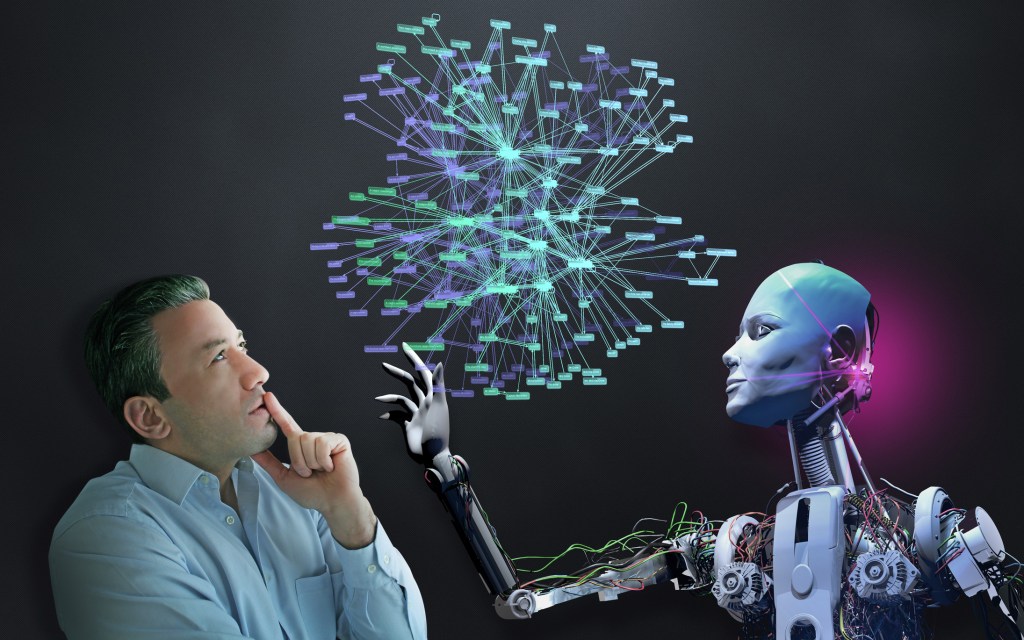Daniel Huttenlocher
Artificial intelligence seems to be nearly everywhere these days, yet most people have little understanding of AI technology, its capabilities and its limitations.
Despite evocative names like “artificial intelligence,” “machine learning” and “neural networks,” such technologies have little to do with human thought or intelligence. Rather, they are alternative ways of programming computers, using vast amounts of data to train computers to perform a task. The power of these methods is that they are increasingly proving useful for tasks that have been challenging for conventional software development approaches.
The commercial use of AI had a bit of a false start nearly a quarter century ago, when a system developed by IBM called Deep Blue beat chess grand master Garry Kasparov. That generation of AI technology did not prove general enough to solve many real-world problems, and thus did not lead to major changes in how computer systems are programmed.
Since then, there have been substantial technical advances in AI, particularly in the area known as machine learning, which brought AI out of the research lab and into commercial products and services. Vast increases in computing power and the massive amounts of data that are being gathered today compared to 25 years ago also have been vital to the practical applicability of AI technologies.
Today, AI technology has made its way into a host of products, from search engines like Google, to voice assistants like Amazon Alexa, to facial recognition in smartphones and social media, to a range of “smart” consumer devices and home appliances. AI also is increasingly part of automobile safety systems, with fully autonomous cars and trucks on the horizon.
Because of recent improvements in machine learning and neural networks, computing systems can now be trained to solve challenging tasks, usually based on data from humans performing the task. This training generally involves not only large amounts of data but also people with substantial expertise in software development and machine learning. While neural networks were first developed in the 1950s, they have only been of practical utility for the past few years.
But how does machine learning work? Neural networks are motivated by neurons in humans and other animals, but do not function like biological neurons. Rather, neural networks are collections of connected, simple calculators, taking only loose inspiration from true neurons and the connections between them.
The biggest recent progress in machine learning has been in so-called deep learning, where a neural network is arranged into multiple “layers” between an input, such as the pixels in a digital image, and an output, such as the identification of a person’s face in that image. Such a network is trained by exposing it to large numbers of inputs (e.g. images in the case of face recognition) and corresponding outputs (e.g. identification of people in those images).
To understand the potential societal and economic impacts of AI, it is instructive to look back at the industrial revolution. Steam power drove industrialization for most of the nineteenth century, until the advent of electric power in the twentieth century, leading to tremendous advances in industrialization. Similarly, we are now entering an age where AI technology will be a major new force in the digital revolution.
AI will not replace software, as electricity did not replace steam. Steam turbines still generate most electricity today, and conventional software is an integral part of AI systems. However, AI will make it easier to solve more complex tasks, which have proven challenging to address solely with conventional software techniques.
While both conventional software development and AI methods require a precise definition of the task to be solved, conventional software development requires that the solution be explicitly expressed in computer code by software developers. In contrast, solutions with AI technology can be found automatically, or semi-automatically, greatly expanding the range and difficulty of tasks that can be addressed.
Despite the massive potential of AI systems, they are still far from solving many kinds of tasks that people are good at, like tasks involving hand-eye coordination or manual dexterity; most skilled trades, crafts and artisanship remain well beyond the capabilities of AI systems. The same is true for tasks that are not well-defined, and that require creativity, innovation, inventiveness, compassion or empathy. However, repetitive tasks involving mental labor stand to be automated, much as repetitive tasks involving manual labor have been for generations.
The relationship between new technologies and jobs is complex, with new technologies enabling better-quality products and services at more affordable prices, but also increasing efficiency, which can lead to reduction in jobs. New technologies are arguably good for society overall because they can broadly raise living standards; however, when they lead to job loss, they can threaten not only individual livelihood but also sense of identity.
An interesting example is the introduction of ATMs in the 1970s, which transformed banking from an industry with highly limited customer access to one that operated 24/7. At the same time, levels of teller employment in the U.S. remained stable for decades. The effects on employment of automation because of AI are likely to be particularly complex, because AI holds the potential of automating roles that are themselves more complex than with previous technologies.
We are in the early days of a major technology revolution and have yet to see the great possibilities of AI, as well as the need to address possible disruptive effects on employment and sense of identity for workers in certain jobs.






























Comment